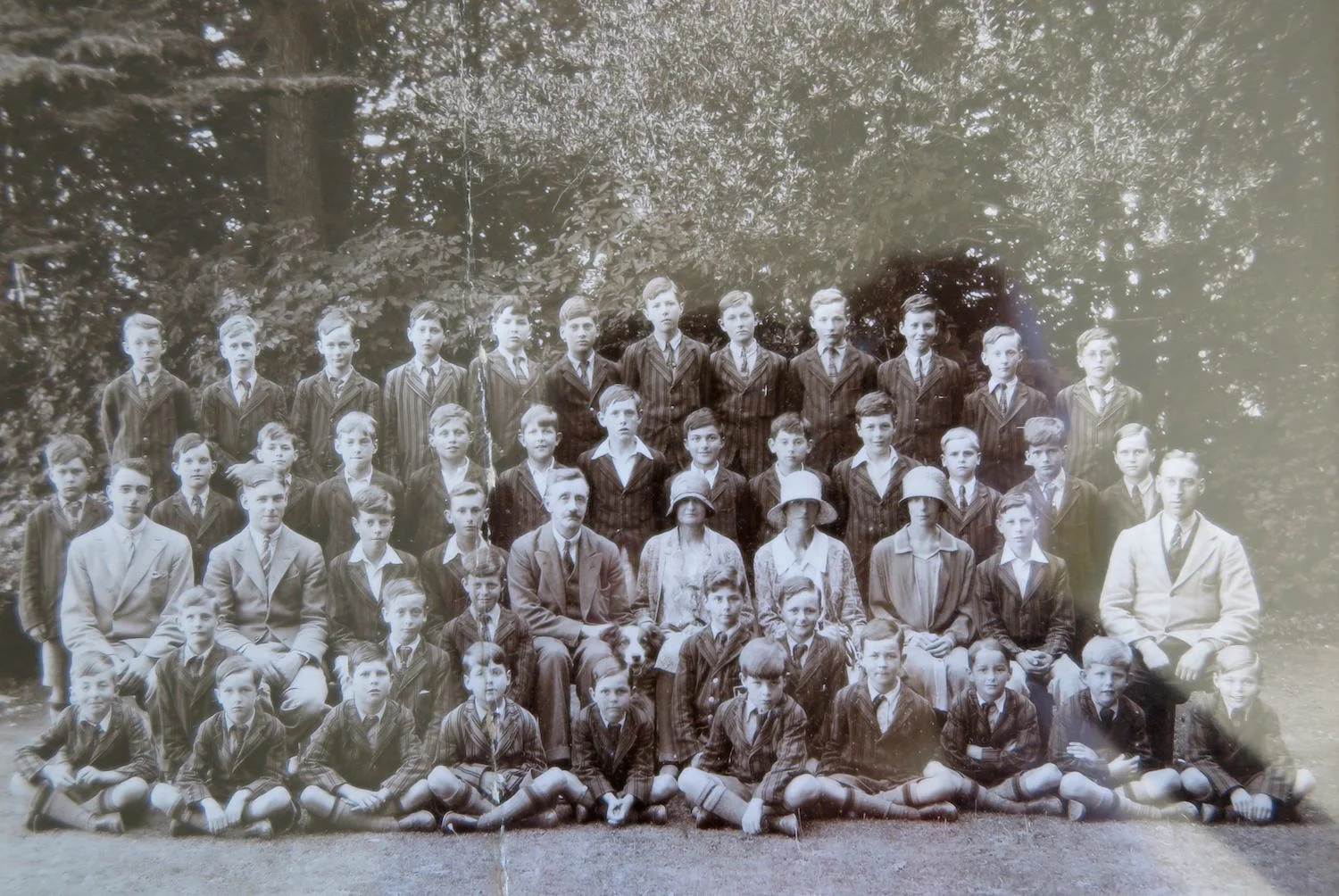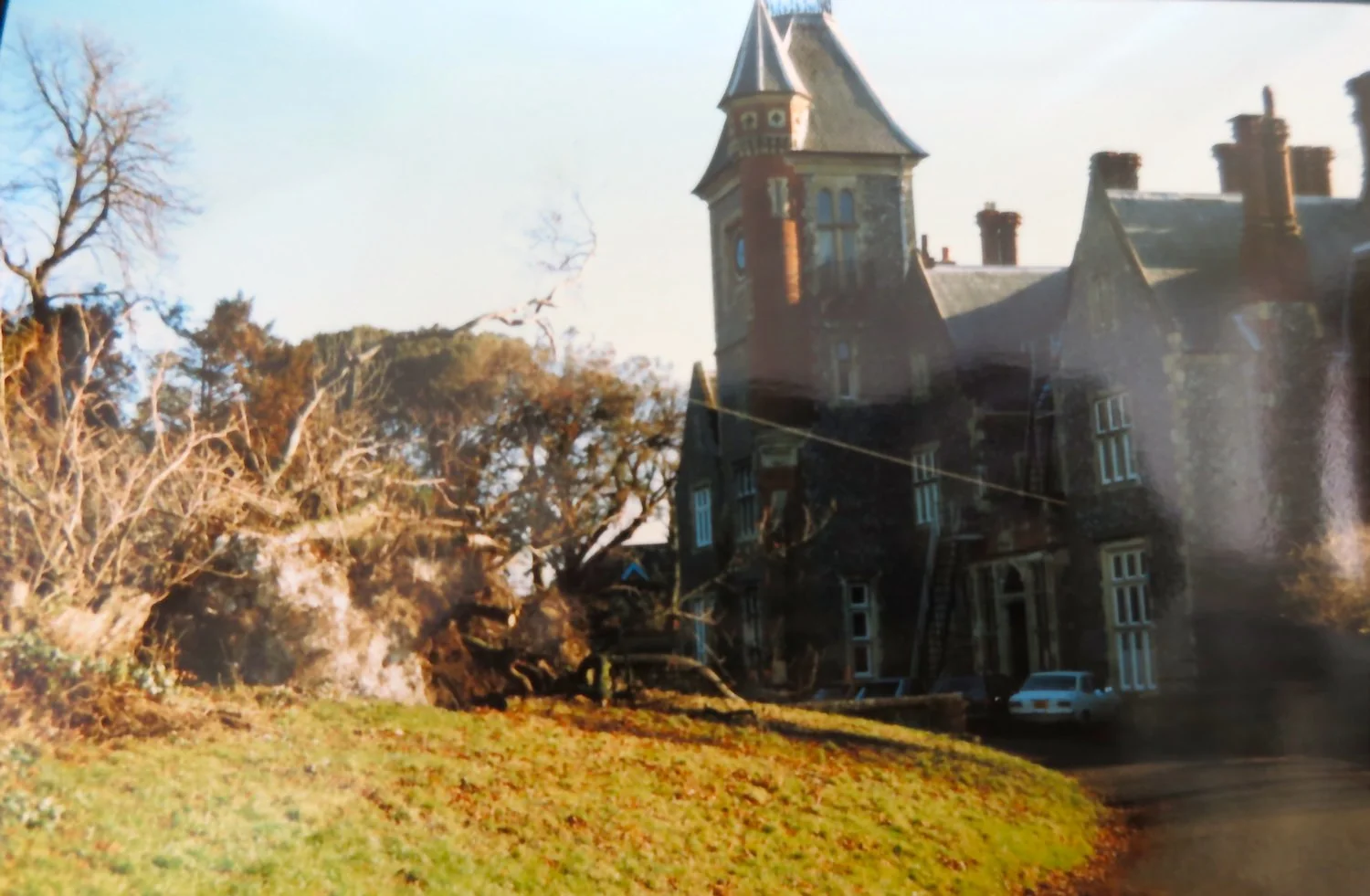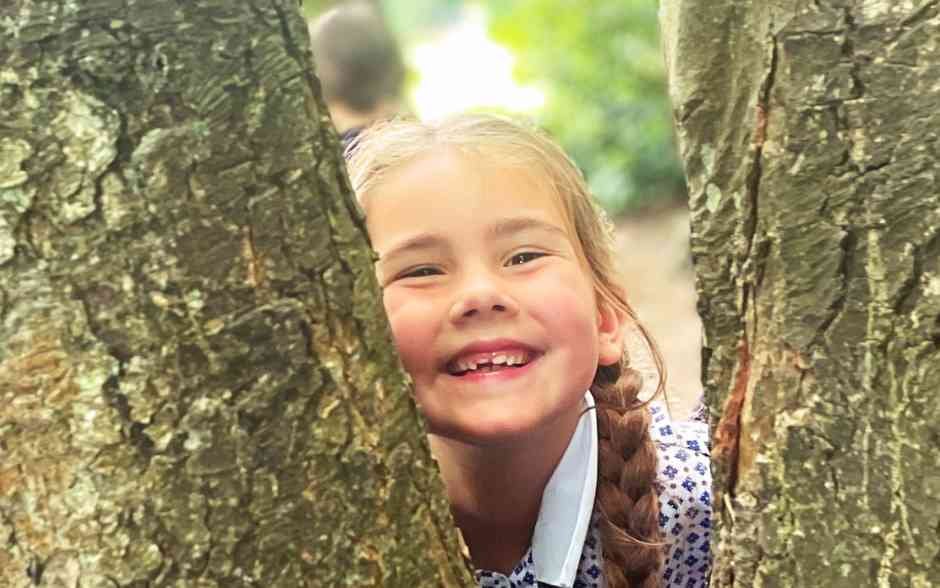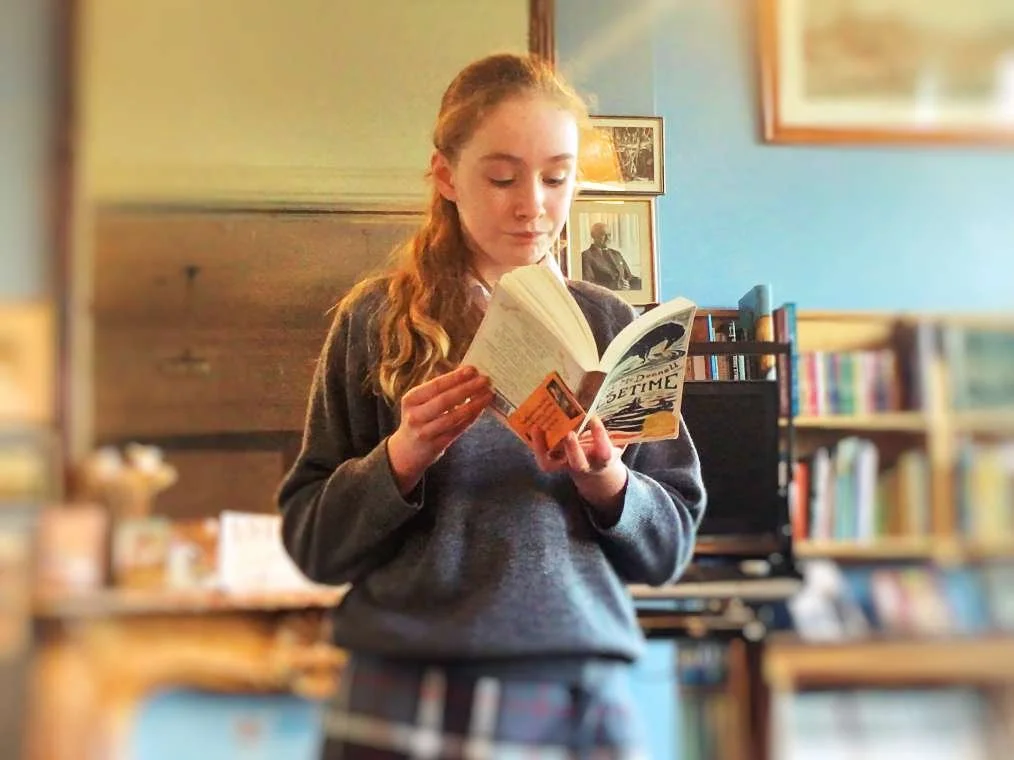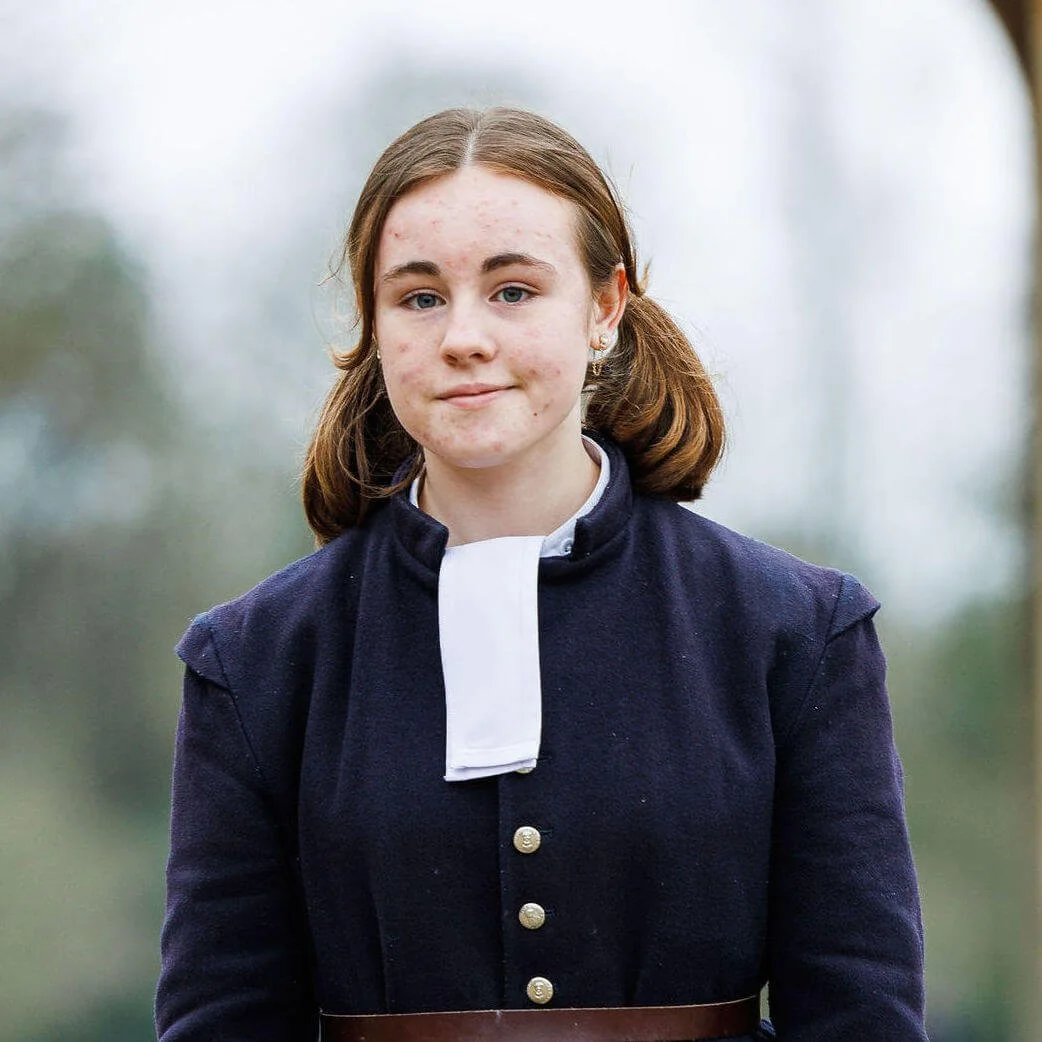Remembering the Great Storm of 1987 at Sompting Abbotts Preparatory School
/The school the morning after the Great Storm of 1987
“Mummy, the building’s shaking ...”
Mrs Patricia Sinclair, Principal of West Sussex independent school Sompting Abbotts, has vivid memories of the night of 15 October 1987. She remembers herself and her three children, Ruth, David and Tim, peering out into the dark in the early hours, the deafening roar of wind, and the crashing sound of great trees falling.
Tim and David Sinclair were joined by staff and boarders in helping with the post-storm clean-up
Nobody saw it coming ...
The Great Storm that hit Sompting Abbotts that night with 100+mph winds seemed to come from nowhere. The fact that the storm apparently caught forecasters by surprise shows just how suddenly the ferocious storm arrived. The result would later be described by Home Secretary Douglas Hurd as the “worst, most widespread night of disaster” since the Blitz.
One of many fallen trees on Church Lane blocking access into Sompting Abbotts Preparatory School
BBC weather forecaster Michael Fish is now notorious for his telling viewers “not to worry” about the impending storm.
During the evening of 15 October, radio and TV forecasts didn't refer to strong winds but warned only of heavy rain. By the time most people went to bed, the approaching storm hadn't even been mentioned in the national TV weather broadcasts. Although it wasn't officially a hurricane because it didn't originate in the Tropics, the winds experienced were of equivalent strength. The strongest gust in the UK was recorded at Shoreham-by-Sea at 3.10am as 120 mph.
“The school parkland lost more than 300 trees in a matter of hours – with the storm toppling many magnificent old trees of immense girths that were ripped from the ground by their roots.”
Damage patterns in South East England suggested that whirlwinds accompanied the storm which was why the local variations in the nature and extent of destruction were so considerable.
During the first period of the storm, the wind direction was southerly. But, as the storm built, it turned south-westerly and smashed straight into the path of Sompting Abbotts, sitting exposed to the coast and high on its hill-top position.
A mature tree uprooted in the school grounds
School lessons are suspended
It was only at dawn the next morning that the staff and pupils at Sompting Abbots (in those days there were boarders) realised the extent of the damage that had been wreaked by what became known as the Great Storm of 1987.
Power lines had toppled across the South Downs, cars had been flipped over, homes wrecked, and 18 people had lost their lives.
In the days before 15 October, very wet weather had softened the ground, loosening root-systems. Trees were made more vulnerable by the fact they were still in leaf.
The school parkland lost more than 300 trees in a matter of hours – with the storm toppling many magnificent old trees of immense girths that were ripped from the ground by their roots. At nearby Chanctonbury Ring, the wooded ring of 40-foot beech trees was almost entirely decimated.
Bull-dozers and heavy lifting equipment near the Old Stables
“During the first period of the storm, the wind direction was southerly. But, as the storm built, it turned south-westerly and smashed straight into the path of Sompting Abbotts, sitting exposed to the coast and high on its hill-top position.”
Hundreds of slates from the school’s steep Neo-Gothic style roof were stripped away and smashed by the wind, dozens of panes of glass from the Victorian greenhouses were ripped out, and all the windows in the Top Tower were sucked out.
“The storm took us totally by surprise,” recalls Mrs Sinclair. “There was no warning of its happening and in those days there was no Internet. All the phone lines were down; both the school entrance roads were blocked by fallen trees. I remember we felt it very personally; we felt very isolated.”
Logs from felled trees awaiting collection by the sawmill
That morning, all classes were suspended as the boarders put their hands to the pump and worked together to clear as much of the damage as they could.
Post-storm clean-up operation
It would take three months for the school to be put to rights again, insurance claims to be filled and the clean-up to be completed. Teams of lumberjacks with bulldozers were employed from local sawmills to help clear the grounds, fell damaged trees, and tow away the fallen logs and debris.
Later, the Met Office would be severely criticised for failing to forecast The Storm correctly. An internal inquiry was conducted, from which many improvements were carried out. Critically, the communication of warnings was completely overhauled, resulting in the National Severe Weather Warning Service we know today.
Headmaster Stuart Douch was a day boy in Year 5 at Sompting Abbotts in 1987 ...
I was at home that night. How could I forget it? I remember the horrific noises, the wind screeching and screaming, and the crunch of our television aerial being ripped from the roof.
We had no power and the phone lines were down so my sister and I won a day off school. But later, even our young minds were saddened when we walked up to Lancing Clump and saw so many trees, which we'd often climbed, lying prostrate like fallen giants. The sun shone brighter through the Clump but only because the trees had been bullied aside by the Great Storm.
When I did go back to school, the grounds were different. The trees where we built camps were not all there either. That was sobering too; how the force of Nature had wiped them clean.
What was the effect of the storm on Sompting Abbotts' woodland stock?
Today, the trees on the school's parkland estate are thriving. Natural regeneration occurred, first of low-growing woodland flowers, then of bushes and shrubs, and eventually the trees grew back to re-fill the canopy.
Parts of the woods that were overshadowed before the storm become light and airy with expanses of vibrant natural regeneration. Birds came in to nest, animals found a home and wild flowers grew.
Tony Whitbread of the Sussex Wildlife Trust says that despite everything, the storm had some positive effects: "As an ecologist, it was pretty clear to me that the storm was not a bad thing at all. Indeed, in terms of its effects on the semi-natural woods of the south east, in many ways it was a boost to woodlands and their wildlife".










